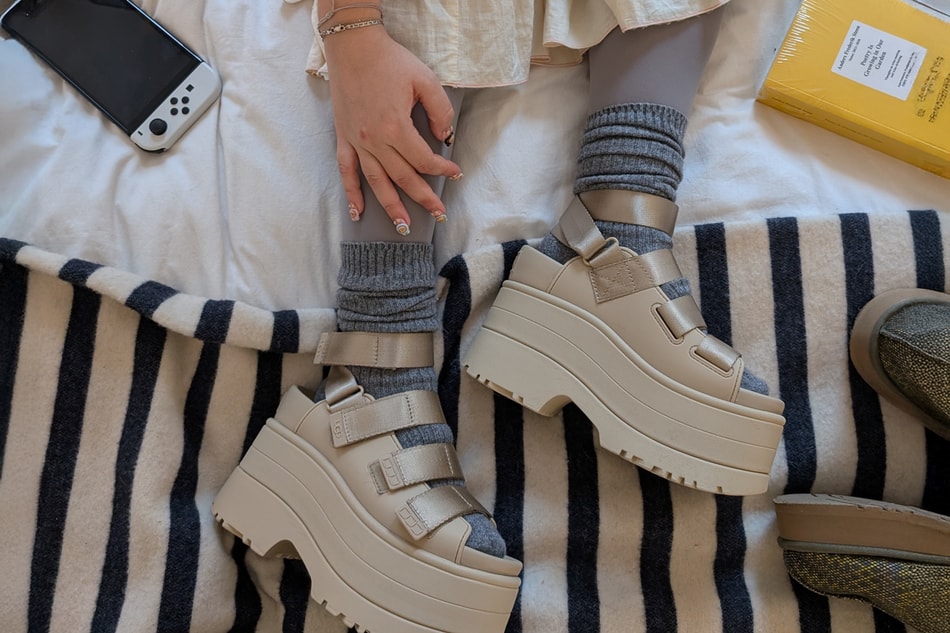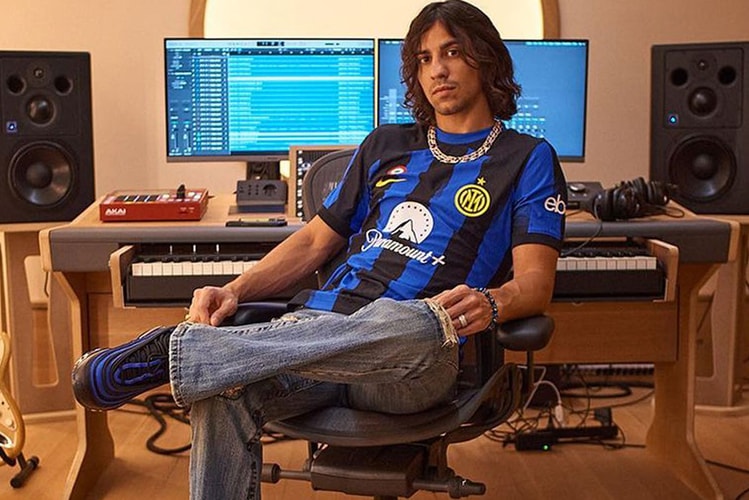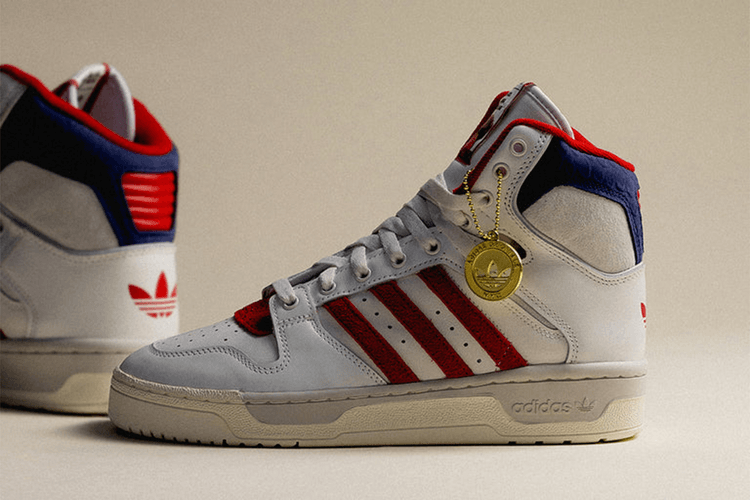POST ARCHIVE FACTION Is Finding Equilibrium
South Korean designer Dongjoon Lim navigates dichotomies through his label PAF — in ‘Hypebeast Magazine’ Issue 31.
The inherent pursuit of balance runs through Dongjoon Lim‘s burgeoning menswear label POST ARCHIVE FACTION—or PAF, as it’s most commonly titled. The South Korean brand’s methodical and intelligent garments fall somewhere between utilitarian sportswear and experimental futurism.
The pursuit is also found in Lim’s precise approach to the design process—an essence that stems from his background in industrial and space design. Since bursting on the scene in 2018, Lim’s brand has earned him an impressive list of growing accolades: he was a semi-finalist for the prestigious LVMH prize in 2021, presented at Paris Fashion Week, and churned out highly anticipated collaborations with the likes of FILA Korea and Virgil Abloh‘s Off-White. Now, with the brand’s streamlined 5.1 collection—marking the end of its “CHAPTER ONE” series which began in 2018 — Lim has his sights set on more.
“When you think about a classic shirt, you are reminded of an archetype. The exact perspective depends on the person, but there is a common thought of that archetype in our mind, so I’m trying to find that point. From that, I stretch the experimental level to the left and try to find a balance.”
Like a small-but-growing, faction of designers nowadays—think Eli Russell Linnetz and Samuel Ross—Lim wasn’t initially drawn to fashion, opting instead to pursue a degree at Hongik University, a private Seoul institution known for its architecture and design programs. There, the blossoming creative was not immersed in tailoring or the ins and outs of pattern making but instead gained insight into product development—knowledge that, he says, later influenced the analytical-meets-experimental elements of his brand like exposed seaming and two-way zips. This industrial and product background is a driving force behind the brand. Yes, aesthetics are too, but there is also a distinct emphasis on wearability and functionality. “Most people in the industry are interested in fashion from an early age,” Lim says. “I didn’t have much interest in fashion until I was 20 years old, when I was in university. And even in my personal style [now,] I only wear a couple of outfits—[almost] like Steve Jobs.”
Lim wore uniforms throughout his schooling up until university—as is standard in South Korea—but Hongik’s lack of a dress code caused him to challenge his relationship with fashion for the first time (he says he only had one or two pairs of shoes amongst a generation of sneaker-obsessed South Korean youth). “I was confused, as I thought I loved uniforms because they were very convenient,” Lim recalls. “But from that moment, I started to think ‘What should I wear?’”
To this day, Lim’s query guides the core of PAF’s push for an “archive of the future,” rooted in the exploration, and, at times, the rebuttal of traditional style codes. After deciding to leave the program two years in—and having met a creative cohort of colleagues, some of whom now work at PAF—Lim dabbled in user experience design for IT companies and fashion brands before ultimately launching PAF alongside co-founder Sookyo Jeong. Lim approached the early stages of the label deliberately, honing in on the function of garments as products that could fulfill a consumer need rather than satisfy an aesthetic fantasy—though there’s still plenty of aesthetic fantasy in PAF.
Dually rooted in experimentation and perspective, PAF divides its collections into three main categories: conservative right, intermediate center, and radical left. This trio of monikers derives from political systems and is seen in varying degrees throughout the brand’s garments—from monochrome long sleeves and tailored trousers to mesh cutout abstractions and voluminous, cocoon-like outerwear. For Lim, that foundational aspect is not only derived from politics but also from his father, who, like many South Koreans in the ’80s, protested the actions of the country’s then-militaristic government. This tension, at times radical and jarring, is felt throughout the brand’s stylistic language—an analysis of what is moral, a push and pull between right and wrong.
That classified contrast is emphasized in the brand’s garment-making process, too. “When I design, I start from the ‘right’ first; I always need to set a starting point,” Lim explains. “When you think about a classic shirt, you are reminded of an archetype. The exact perspective depends on the person, but there is a common thought of that archetype in our mind, so I’m trying to find that point. From that, I stretch the experimental level to the left and try to find a balance.”
“People say that life is a marathon. I agree with that. When I’m learning about my company, it feels like a marathon.”
For PAF’s debut 1.0 collection (the brand uses an increasing numerical system to name it’s collections) Lim’s tiered theory began what is now a solidified language. Opening the label’s “CHAPTER ONE” series, the collection looked to the idea of a uniform featuring both the traditional and the inventive—subdued black bombers, cut-out trenches, layered PVC jackets—for a wearable and experimental exploration of traditional menswear codes. “In our design process, I start from a uniform—uniform means ‘one form,’” Lim notes. “And then we transform it into multi-forms, which are right, center, and left.”
Lim rebukes the notion that PAF’s garments are soley “deconstructed,” instead opting to focus on the coexistence of deconstruction and reconstruction. While Lim is taking apart elements of the modern wardrobe—oxford button downs, peacoats, tapered trousers—he is simultaneously refashioning those very pieces into something new, an archive of the now. It’s an approach that’s been done before, but what sets PAF apart is an emphasis on balance. Color also remains a point of equilibrium in the brand’s signature. Earlier collections like 2.0 and 3.1 heavily feature all-black colorways (with accents of deep reds and purple) while the brand’s most recent 5.0+ and 5.1 collections veered into new territory with transparent seafoam blues, slate grays, and vivid lime greens. Those two collections—which marked the end of “CHAPTER ONE”—also featured new womenswear explorations, like a transparent jersey skirt and a sprawling dress with an intricate overlay and a sheer underlayer. These pieces challenged binaries, a first for the brand despite most of its previous pieces being unisex. “I always say that we are unisex category-wise,” Lim explains. “I don’t want to categorize menswear and womenswear [within] the brand, but in the design process, I definitely had to separate the two. Menswear has an exact silhouette, more like a uniform. But with womenswear, we have more freedom.”
While the pair of collections marked the end of the brand’s first chapter, they were a decided step up in technique and fabrication. Lim explored new textiles like silk, sheer, and mesh, something that the brand had initially steered away from. While the delicate fabrics are usually reserved for something softer, they felt at home in the collection—adding feelings of both tension and balance when layered against technical fabrics like cotton and nylon. “Nowadays we’re trying to expand our design language, and thankfully, the infrastructure for fabric sourcing in Korea is really good,” Lim says. “It’s really important that we not only make [experimental] pieces but also things that people could buy.”
With an increasing profile in the industry comes a dichotomy: how to properly scale a business while remaining true to an artistic vision. The 2022 opening of the brand’s Seoul flagship store signals how Lim is approaching that polarity. As many brands shift their businesses solely online, PAF’s new space places an emphasis on craft, as it’s based in the brand’s former sewing factory, and features an interactive display system that highlights the functionality of its garments. “There are three rails [which] give us the freedom to rearrange items depending on the necessity or seasons—so it creates a different environment [and] atmosphere,” the designer explains. “And that resembles our garments as well — we usually have those adjustable styles that create different forms of [the] body. Those overall design languages also share between space and our product.”
At the time of the interview, Lim was gearing up for “CHAPTER TWO,” which brought the brand’s 6.0 collection to Paris Fashion Week earlier this year. He has his sights set on a potential creative director gig at a luxury brand as well, something he reveals is his “next personal goal.” While spearheading a brand with such exponential success can overwhelm some designers, Lim is taking it in stride—and PAF’s leading tenets of balance and exploration are guiding him. “People say that life is a marathon,” the designer explains. “I agree with that. When I’m learning about my company, it feels like a marathon.” While Lim navigates uncharted terrain, the meeting point of PAF remains constant: somewhere that the uniform comes to flourish, where function meets aesthetic, and where yesterday’s conservative becomes the new avant-garde.
HYPEBEAST Magazine Issue 31: The Circle Issue is now available on HBX.



















